I wouldn't make a good general.
Not because I lack the imagination or can't make decisions quickly enough – in those respects, I think I'd do okay... But the detachment – the calculated callousness necessary to send x-amount of troops to their deaths so that a strategy is successful – that I could not hack. Not under any circumstances.
Because of this inherent weakness (my fondness for the faceless individual), strategy games are not something I indulge all that often. If there's a computerized battle to be fought, I'd much rather play as a front-line grunt – responsible only for their own fate (or those of grunts next to 'em, at a stretch) – than some distant overlord deciding the fate of thousands as if they were pawns lined up on a chessboard...
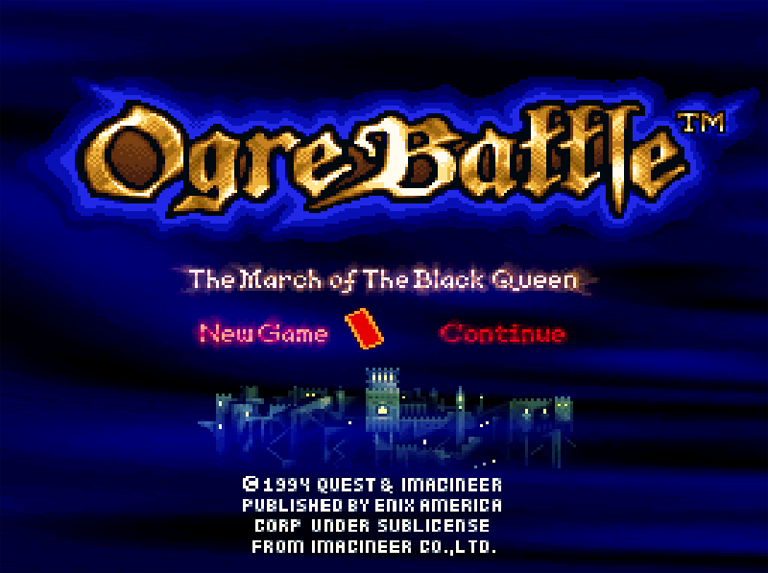
Still, every now and again, a game comes along that strikes enough of a balance between strategic scale and personal involvement to lure me in for a playthrough or three — and none have done it better than Ogre Battle.
The 1994 SNES gem by Kabushiki gaisha Kuesuto (the funner way to write "Quest Corporation") tells the story of a last-ditch uprising by a band of rebels against the evil Zeteginean Empire that has a definite Star Wars vibe to it (which, in turn, ripped off Kurosawa's Hidden Fortress, so — full-circle and all that). An evil sage by the name of Rashidi killed his best mate King Gran Zenobia, allied himself with Empress Endora (not an ewok) and used her vast armies to subjugate the continent. The last, dim ray of hope in the midst of tyrannical Zeteginean rule is that a handful of Knights of Zenobia yet survive and they don't intend to take all that oppression laying down.
As their ragtag little uprising prepares for One Last Effort to shrug off Zeteginean rule, you (the player) are placed in command and given free reign to determine what shape liberation will take. Will you be the saviour the continent so desperately needs? Or will the evil you face merely pose a "hold my beer" moment before you give the entire continent something to really complain about?
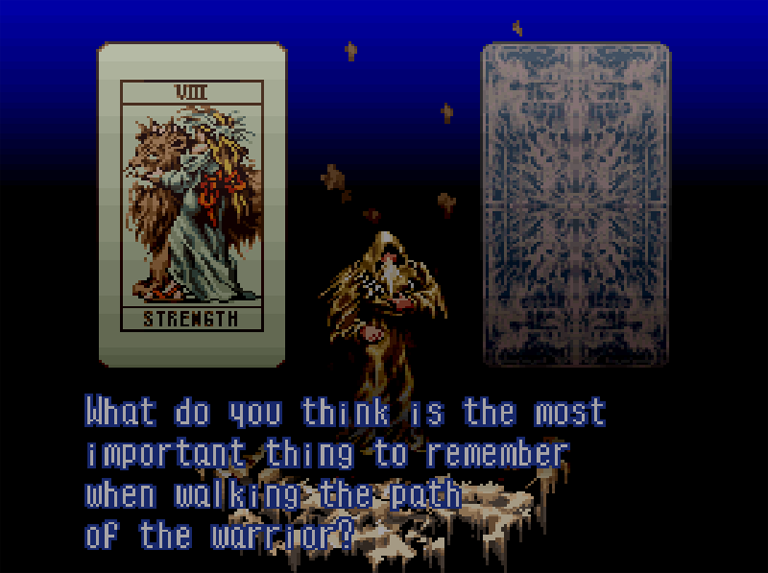
The best thing about Ogre Battle (other than it's amazing design, adorable visuals, operatic sound and addictive gameplay); is that it all Hinges On Choice. From the very beginning (wizard Warren's handy Character Creation Questionaire); and throughout the entire, epic experience you are free to decide who your hero is, how your units will evolve, how the rebellion will progress and how major junctures will pan out. Given how simple the core gameplay mechanics are, it's amazing how much character, depth, secrets and plain old fun Quest managed to pack into a mere megabyte-and-a-half of a game.
Each new session starts with Warren (an aged wizard who later becomes an ally) asking you 22 questions (one for each card of a deck of tarot); which will determine the type of hero you will begin the game as and her (or his) retinue (from a possible pool of four). Each hero type not only has distinct attack types, but also specific defenses and (most importantly) Alignment and Charisma values which will later determine your Reputation and directly affect the type of ending your game will have.
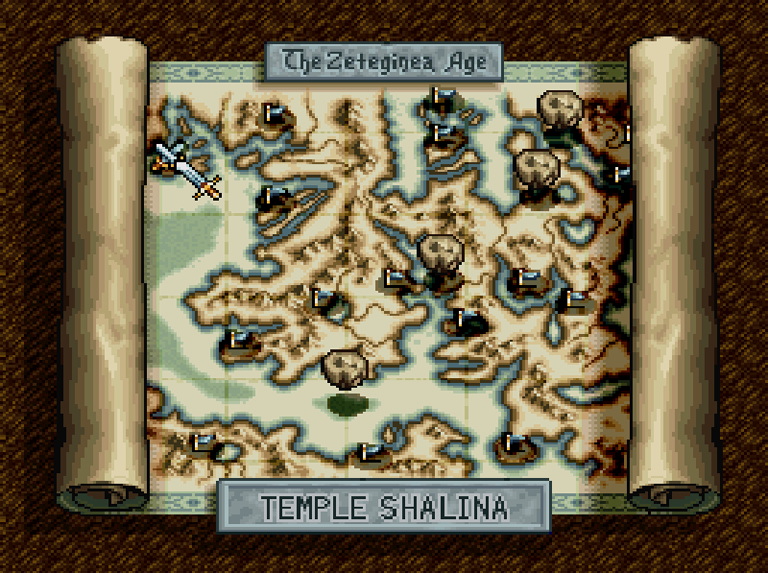
The basic gameplay loop sees you begin on a world map which shows all 29 locations you have to liberate to successfully overthrow the Zeteginean Empire. Here you can form new armies, promote units, equip items or save your game.
Units come in two flavors – small (like a Fighter, a Hawk Man or a Werewolf); and large (your Krakens, Titans or Salamands) – and up to six can be placed into a single army (six smallies, that is, or three large ones — or any mixture of the two). Armies are composed of two rows (front and back) and each unit behaves differntly depending on what row it's placed on. A Samurai, for instance, will perform two slash attacks in the front row and a single (powerful) ranged attack from the back.
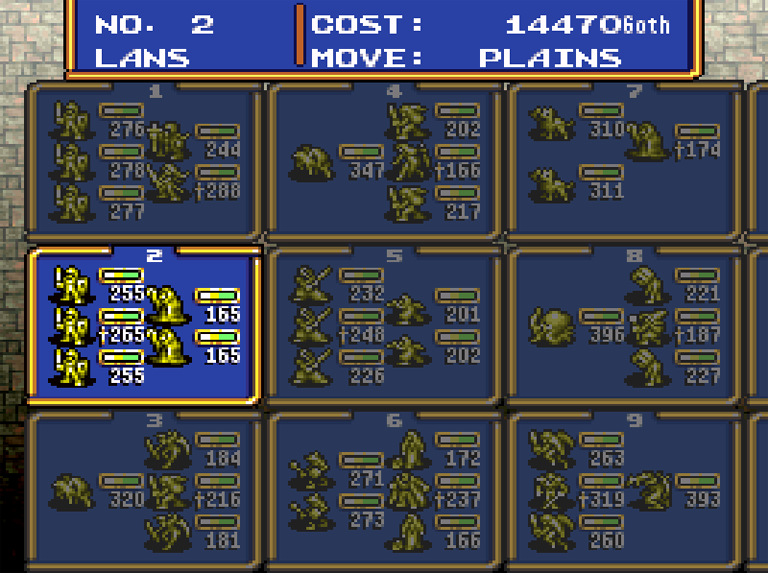
Whichever unit is designated as the leader of an army uses their Alignment and Charisma for the purposes of victory conditions and liberating towns. Keep pouncing on weaker opponents and your leader's Alignment/Charisma will drop. Liberate a town with a low Alignment/Charisma army and your Reputation will plummet. It's a neat mechanic that not only puts a spotlight on individual units (making you care about their ongoing progress), but also adds another wrinkle to combat – as units nearing the enemy's level need to be rotated to prevent Alignment/Charisma drops (unless, of course, they're evil units – in which case a lower Alignment may be beneficial to their progression).
Another ingenious mechanic is how units are promoted to higher ranks.
While Ogre Battle boasts 78 (!) unit types, fewer than 21 are available at the outset. To get higher level units, you have to nurture your wee sprogs – making sure their Alignment falls into the range needed by the promotion you're after and their Charisma is high enough to warrant one. While, later in the game, items to raise (or lower) unit stats can be purchased or found, the most consistent way to maintain a unit's Alignment and Charisma is by ensuring they only fight battles beneficial to their advancement. That means every battle is crucial and every army becomes a long-term investment.
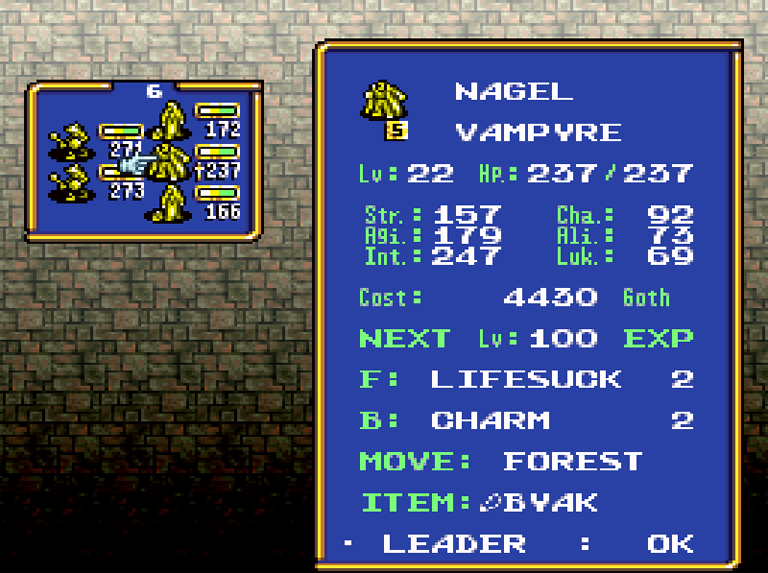
Certain, specialized units (such as a Princess, a Dragoner, Vampyre or Lich) can only be attained by meeting the Alignment/Charisma requirements and using a special item (a Royal Crown, a Stone of Dragos, a Blood Kiss or an Undead Ring).
Couple that with items you can equip (each unit can have one); and movement types that make certain compositions move faster across certain (or above all) types of terrain and you have the basis for gameplay that is – as the adage goes – simple to grasp but difficult to master.
Once your armies are formed, you select the stage you want to undertake and are thrust onto its area map with terrain to overcome, secrets to uncover, cities and temples to liberate and an Ultimate Boss to defeat (which, once accomplished, clears the stage).
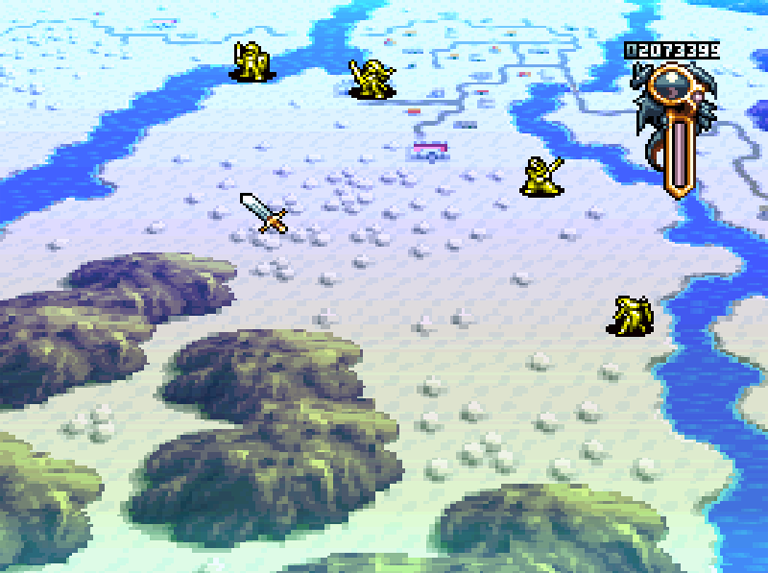
Your opponents have an exhaustible pool of armies of their own, which they will keep sending after your base the instant you finish deploying your units. Losing liberated cities to the opponent or (heaven forfend) allowing your base to be captured lowers your reputation and – in the latter instance – means having to restart the stage from scratch.
On the surface, battles between armies are quite simple: when two armies meet, every unit performs its allotted attacks and whichever army deals the most damage wins. The defeated army is then pushed back from the point of conflict – free to attack again or (if it lost its leader) retreat back to base for a replacement. If an army loses all of its units, it is eliminated from the pool for that stage.
During battle, you can issue four orders that specify a target for attack and also come with their own peculiar bonuses. Strong focuses your army's attacks on the unit with the most hitpoints, dealing and receiving less damage. Weak, goes after the unit with the least HP, dealing and receiving more damage. Leader is useful if you want to force an army to retreat (say, if you don't have any white magic on hand and the leader is the only unit you can damage); or in boss battles. And best makes your units focus on damage output – going after units each individual can damage the most. The last two settings (leader and best) switch your healers into attack mode, making them "heal" undead units to, er, actual death.
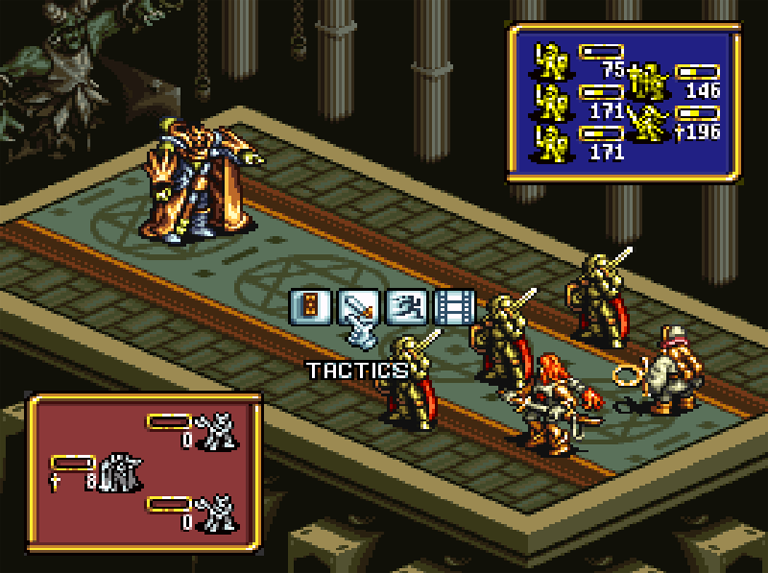
While straightforward, the orders can be changed multiple times during a battle to shift its flow and can also be enhanced with use of the tarot (you didn't think the cards that shaped your hero were just for show, did you?) Every time you liberate a town or temple, you draw a card (which also boosts the army leader's stats in a certain way). Then, during battle, you can employ them to, say, send the enemy to sleep (Hierophant), decrease their defenses (Hanged Man); or simply whack 'em with a massive hammer (Chariot).
Though crucial in certain scenarios, the tarot are also a kind of double-edged sword as cards that destroy units will see the resultant experience go straight to your hero (which can disproportionately raise their level above that of enemies for a given stage, which – in turn – leads to the "lowered Alignment/lowered Reputation" conundrum).

Most stages come with little side stories of their own – the completion of which can lead to bonus items or unique, recruitable units – and, once completed, can be revisited to discover buried items, complete "quests" from other maps or acquire neutral units that roam free in certain areas. It's a neat feature that lends Ogre Battle a more sandbox-y, less linear, feel.
It's been 31 years since Ogre Battle made its debut and – in all that time – the only meaningful improvement on the formula came in the form of Final Fantasy Tactics (1997) (which makes sense, as both were directed and designed by the same person – Yasumi Matsuno – whom you can also thank for the excellent Vagrant Story). It's the sort of wee treasure you initially dismiss as "cute" before coming to, 30 or 40 hours later, wondering whether your sole remaining Heart of Leo will be more useful now – to bolster the ranks with yet another Monk – or as an investment to eventually have your Gold Dragon get certified Platinum...
Most impressively, Ogre Battle is a game that presents a strategic scenario (long-term war against a numerically superior opponent); while – at the same time – keeping its focus firmly on the individuals involved therein. It's the best of both worlds: an RPG-lite with strategy elements or — vice versa.
If you enjoy the strategy genre but are turned off by impersonal, action-oriented spins on it (like Company of Heroes or StarCraft); like stories with plenty of nuance and side activities, or simply want to get a few awesome tracks stuck in your brain while staring at some gorgeous pixels, Ogre Battle is the game for you.
It might recount an epic tale but – unlike most contemporaries – it never forgets that even epic tales are, ultimately, about people.
